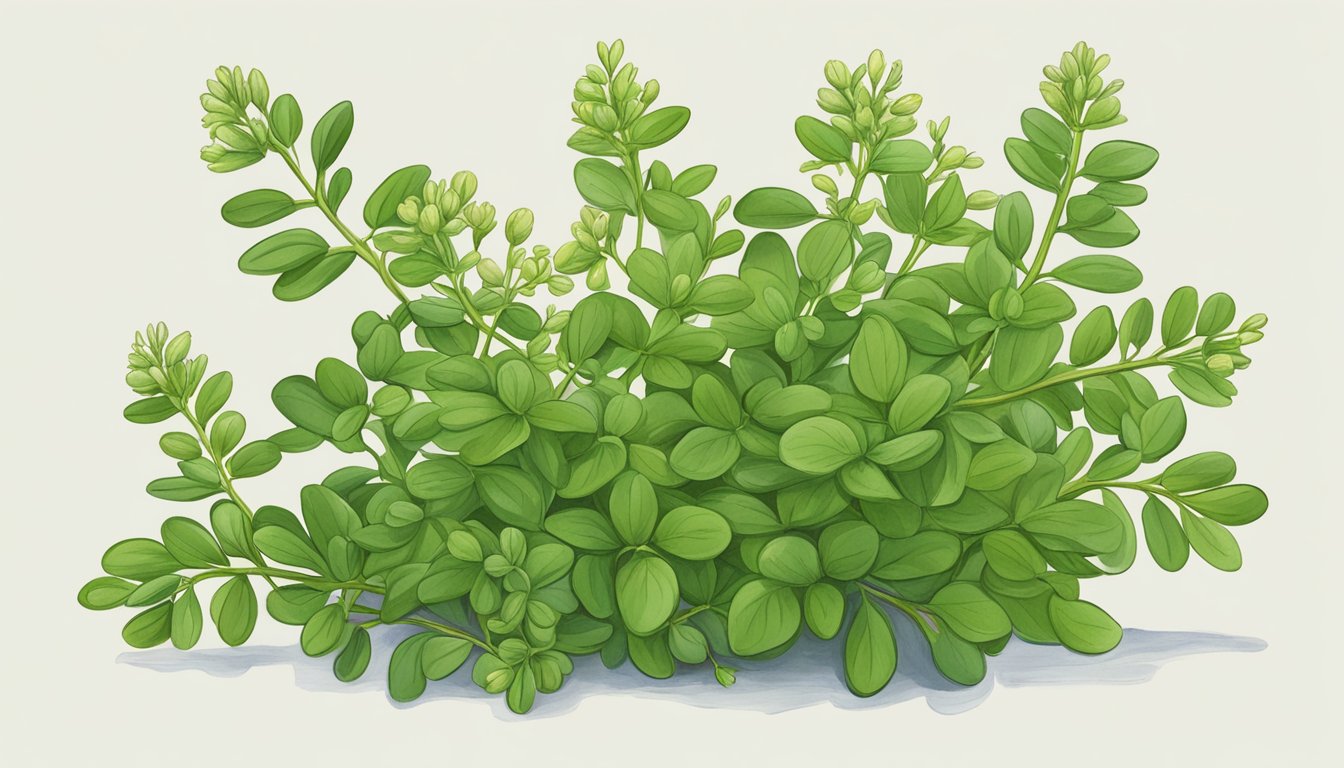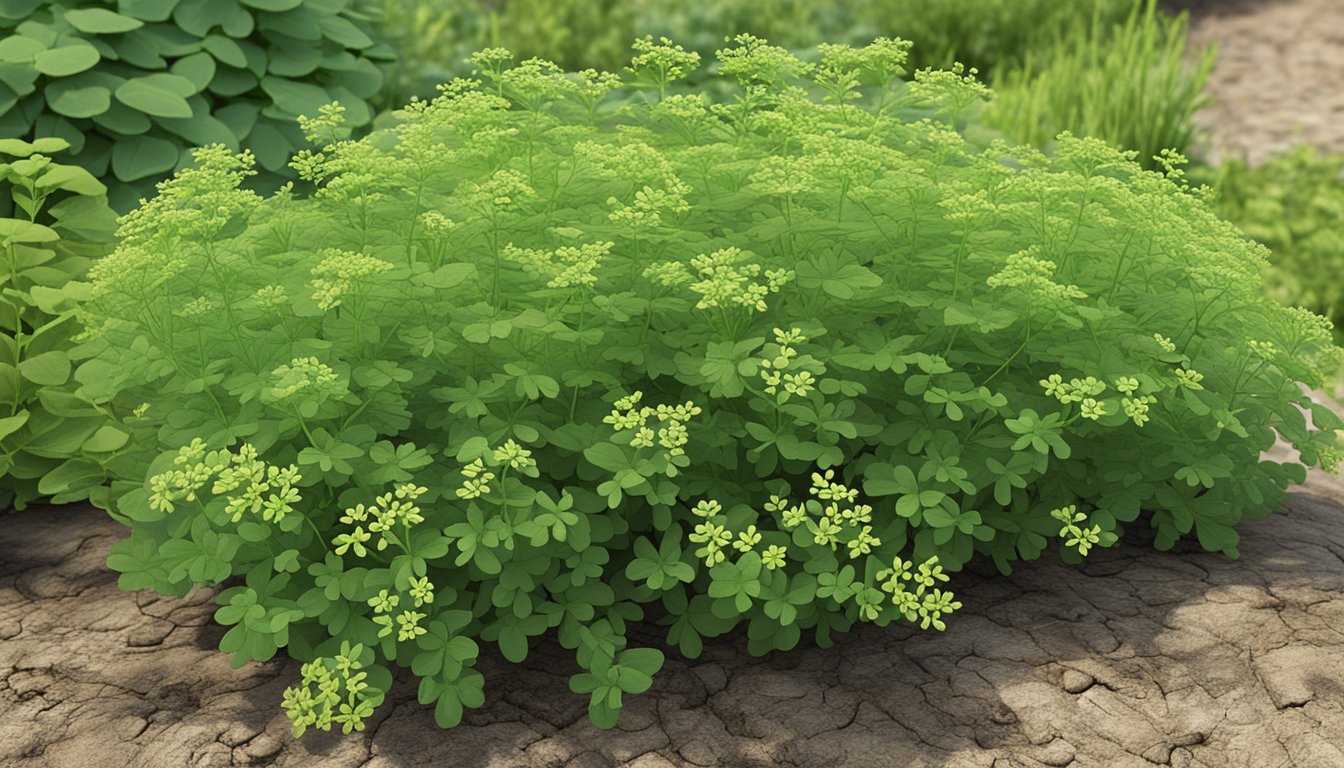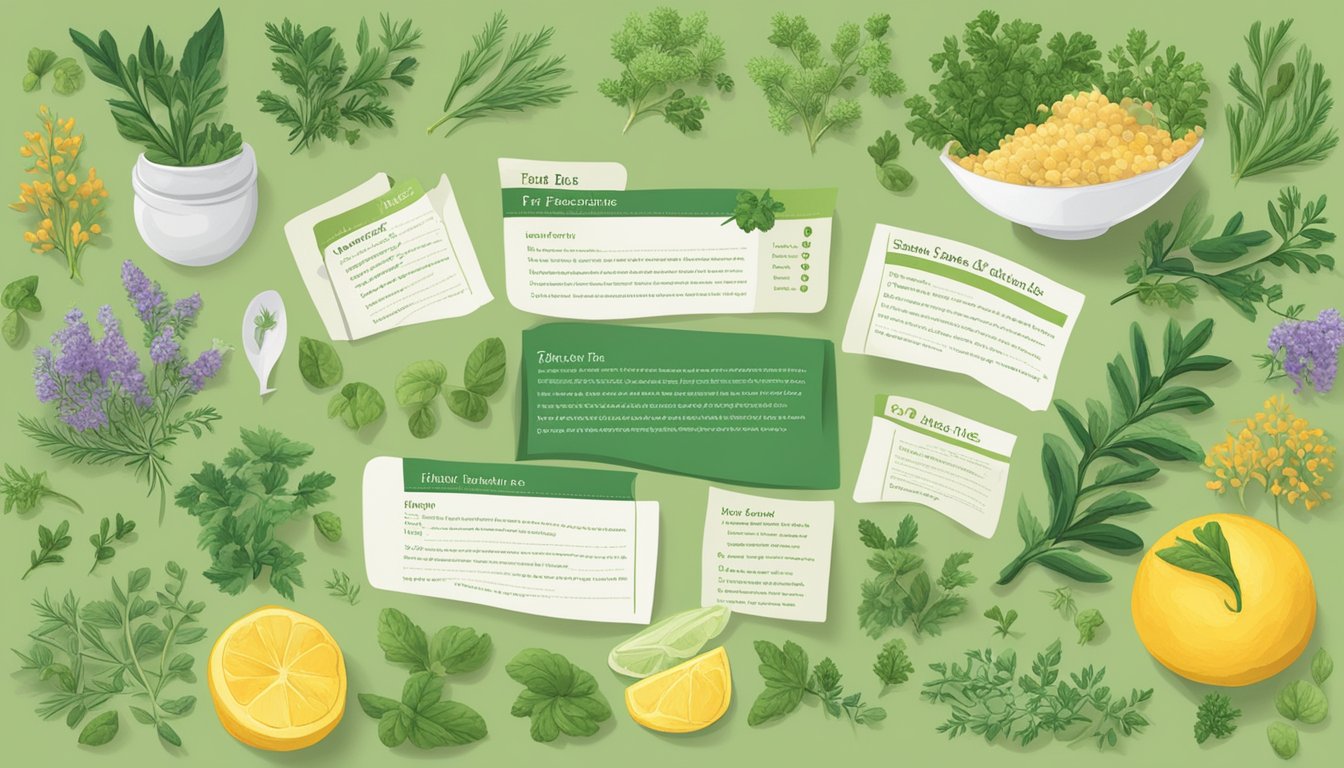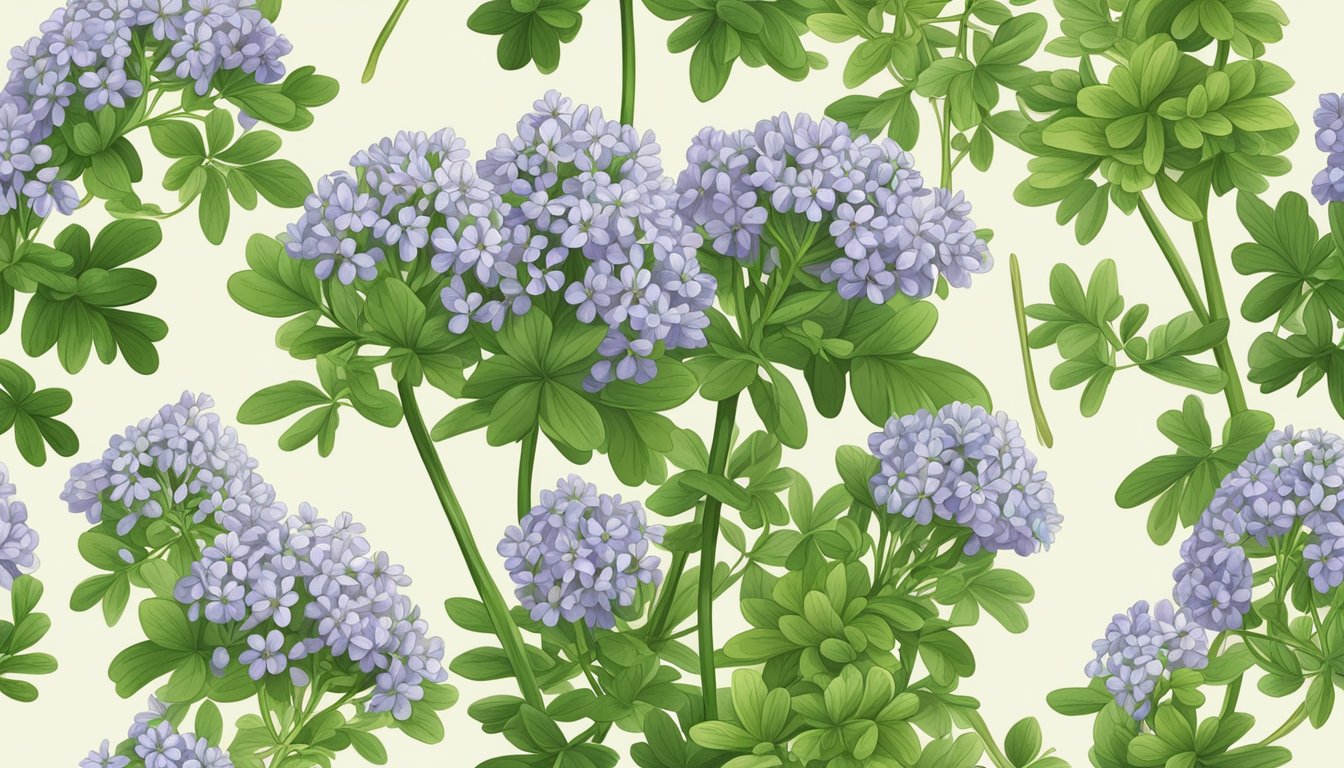TheHerbProf.com is a treasure trove of knowledge for those interested in natural healing and herbal remedies. The website is run by Paul Johnston MD. A naturopathic who has not only received extensive education in the field but also has personal experience in self-healing.
Herb Rue, scientifically referred to as Ruta graveolens, is a perennial herb indigenous to the Balkan Peninsula. It has been utilized for hundreds of years for its therapeutic and culinary attributes. Rue belongs to the Rutaceae family and has a close kinship with citrus plants.
The leaves of the rue plant are strongly aromatic and can be used fresh or dried in small amounts for cooking. Rue is also used in traditional medicine to treat a variety of ailments, including headaches, menstrual pain, and digestive issues. However, it is important to note that rue can be toxic in large amounts and should be used with caution.
Despite its many uses, rue has been largely forgotten in modern times. However, it is still grown in gardens around the world for its beautiful bluish-green foliage and tolerance of hot and dry soil conditions. In this article, I will explore the many benefits of rue and provide tips on how to grow and care for this forgotten herb.
Physical Description of Herb Rue

As an avid herb gardener, I have grown Rue (Ruta graveolens) for its ornamental and medicinal properties. Rue is a compact, bushy, and evergreen perennial shrub that can grow up to 2 to 3 feet tall and wide. The plant has bluish-green leaves that are strongly aromatic. The leaves are bipinnate, meaning they are divided into two leaflets, which are further subdivided into smaller leaflets.
Appearance of Leaves and Flowers
The bluish leaves of Rue are narrow, oblong, and up to 3 inches long. They are smooth on the upper surface and hairy underneath. The leaves are gland-studded, which means they contain small oil glands that give them their strong smell. The flowers of Rue are small and yellow, and they bloom in terminal panicles from June to September. The flowers are followed by small, hard, and round fruits that contain several seeds.
Common Names
Rue is also known by several common names, including herb of grace, common rue, and garden rue. The name “rue” is derived from the Latin word “ruta,” which means bitter. The plant has a long history of use in traditional medicine and is believed to have many therapeutic properties.
Rue is a hardy and attractive herb that is easy to grow in most gardens. It has compact and bushy growth habit, bluish leaves, and yellow flowers that bloom in summer. The plant is also known for its strong-smelling leaves and its many medicinal properties.
Uses of Herb Rue
Rue is a versatile herb that has been used for centuries for its culinary and medicinal properties. In this section, I will discuss the various uses of herb rue, including its culinary, traditional and medicinal uses, as well as its folklore and symbolism.
Culinary Uses
Rue is a popular culinary herb that has a strong, bitter taste. It is used in small quantities to add flavor to dishes such as soups, stews, and sauces. In Italian cuisine, rue is often used in a spicy seasoning paste that contains garlic, hard cheese, coriander, and celery seeds with rue leaves. Rue can also be used to flavor vinegar, oils, and marinades.
Traditional and Medicinal Uses
Rue has been used for centuries for its medicinal properties. It is known to have antispasmodic, anti-inflammatory, antimicrobial, antifungal, and emmenagogue activities. Rue is also used to treat a variety of ailments, including digestive disorders, menstrual cramps, and respiratory problems.
One of the key properties of rue is rutin, a flavonoid that has been shown to have anti-inflammatory and antioxidant effects. Rutin is also known to improve circulation and reduce the risk of blood clots.
Folklore and Symbolism
Rue has a long history of use in folklore and symbolism. It is considered to be a protective herb and is often used in talismans and amulets to ward off evil spirits and bad luck. In ancient Greece, rue was associated with the goddess Eileithyia, who was the goddess of childbirth. Rue was also used in ancient Rome as a symbol of regret and was often used in funeral processions.
Herb rue is a versatile herb that has been used for centuries for its culinary and medicinal properties. It is a bitter herb that is used in small quantities to add flavor to dishes such as soups, stews, and sauces. Rue is also known for its traditional and medicinal uses, including its ability to treat digestive disorders, menstrual cramps, and respiratory problems. Additionally, rue has a long history of use in folklore and symbolism and is considered to be a protective herb.
How to Grow and Care for Herb Rue

Growing and caring for herb rue (Ruta graveolens) can be a rewarding experience for any gardener. Rue is a woody perennial herb that is drought tolerant and has a strong scent that can repel insects. Here are some tips to help you grow and care for this plant.
Light, Soil, and Water Requirements
Herb rue grows best in full sun and well-drained soil. It is important to make sure the soil is not too wet as this can cause root rot. Rue is also drought tolerant and can handle dry conditions during the summer. It is recommended to water the plant deeply once a week during the growing season.
Repotting, Pruning, and Propagation
If you are growing rue in a container, it is important to repot the plant every two to three years. Use a well-draining soil mix and add some lime to the soil to keep the pH level around 7.0. Pruning is also important to keep the plant healthy and bushy. Prune the plant in the spring to promote new growth. Rue can be propagated by seeds or cuttings. Cuttings should be taken in the summer and rooted in a well-draining soil mix.
Potential Pests and Diseases
Herb rue is generally a low-maintenance plant, but it can be susceptible to some pests and diseases. The most common pests that affect rue are aphids and spider mites. To prevent these pests, you can spray the plant with a mixture of water and dish soap. Rue can also be affected by fungal diseases such as powdery mildew and rust. To prevent these diseases, make sure the plant is not overcrowded and has good air circulation.
Growing and caring for herb rue is relatively easy as long as you provide the plant with the right conditions. With its strong scent, rue can be a great addition to any garden as a hedge or border plant. Just remember to wear gloves when handling the plant as the sap can cause skin irritation.
Before You Go: Why Herb Rue is a Versatile and Unique Herb

Herb rue is a versatile and unique herb that has been used for various purposes throughout history. Rue is an evergreen plant with gland-studded foliage, and it is native to the Balkan Peninsula but has since been introduced to other parts of the world, including North America.
One of the most notable uses of herb rue is as a culinary herb. It has a strong, bitter flavor and is often used in small amounts to add a unique taste to dishes such as soups, stews, and sauces. Additionally, rue is also used in traditional medicine to treat a variety of ailments, including headaches, digestive issues, and menstrual cramps.
Another unique aspect of herb rue is its ability to repel insects. The plant contains compounds that are toxic to many common insect pests, including mosquitoes, flies, and fleas. This makes rue a popular choice for natural insect control in gardens and outdoor spaces.
Despite its many uses and benefits, it is important to note that herb rue can also be toxic if consumed in large quantities. It should be used in moderation and with caution, especially by pregnant women and individuals with certain medical conditions.
Overall, herb rue is a fascinating and versatile herb with a long history of use in various cultures around the world. Its unique flavor, medicinal properties, and insect-repelling abilities make it a valuable addition to any herb garden or kitchen.
References – Herb Rue
Little Herb Encyclopedia, by Jack Ritchason; N.D., Woodland Publishing Incorporated, 1995
The Ultimate Healing System, Course Manual, Copyright 1985, Don Lepore
Planetary Herbology, Michael Tierra, C.A., N.D., Lotus Press, 1988
Handbook of Medicinal Herbs, by James A. Duke, Pub. CRP Second Edition 2007
The Complete Medicinal Herbal, by Penelope Ody, Published by Dorling Kindersley
Herb Rue
Herb Rue, also known as Ruta graveolens, is a plant known for its strong, aromatic scent and bluish leaves. It’s a versatile herb that can be used in various ways. Let’s explore how it links to our home page, theherbprof.com.
The Magic of Herb Rue
Herb Rue is a powerhouse of aroma. It’s used in various forms – from fresh leaves in the kitchen to dried leaves for rituals. Its unique scent can add a new dimension to your dishes or ceremonies.
The Link to Our Home Page
Our home page, theherbprof.com, is a treasure trove of information about herbs. It’s not just about Herb Rue; it’s about the overall well-being that herbs can bring. The information on Herb Rue complements the wealth of knowledge on our home page.
The Symbiotic Relationship
The section on Herb Rue and our home page theherbprof.com help each other. The detailed information on Herb Rue on our home page enhances the understanding of our readers. At the same time, the Herb Rue section brings in readers interested in this specific topic.
Check the Following Articles!
Herb for Inflammation: Reduce Pain and Swelling Naturally!
Natural Remedies For Healthy Hair: Herb for Hair Growth
Herb Butter Recipe: A Simple & Delicious Add to Any Meal
Frequently Asked Questions – Herb Rue

What are the benefits of drinking rue tea?
Rue tea is believed to have several health benefits. It is known to have anti-inflammatory and antioxidant properties, which can help improve digestion and boost the immune system. Drinking rue tea may also help alleviate menstrual cramps and reduce anxiety.
What are the culinary uses of rue plant?
Rue leaves have a bitter taste and are commonly used as a flavoring agent in Mediterranean and Middle Eastern cuisines. Rue leaves are used to add flavor to salads, soups, stews, and meat dishes. However, it is important to note that rue should be used sparingly in cooking, as it can cause stomach upset and other adverse effects when consumed in large quantities.
Can cats safely consume rue herb?
No, rue herb is toxic to cats and should not be consumed by them. Ingesting rue can cause vomiting, diarrhea, and other health problems in cats. If you suspect your cat has ingested rue, seek veterinary attention immediately.
What are the medicinal properties of rue plant?
Rue has been used for centuries in traditional medicine to treat a variety of ailments, including headaches, menstrual cramps, and digestive issues. Rue is also believed to have antispasmodic and anti-inflammatory properties, which can help alleviate muscle cramps and joint pain.
How can rue herb be used to alleviate arthritis symptoms?
Rue can be used topically to alleviate arthritis symptoms. Applying a rue salve or ointment to the affected area can help reduce inflammation and relieve pain. However, it is important to note that rue should not be ingested for this purpose, as it can cause adverse effects.
What are the common uses of rue herb in herbal medicine?
Rue is commonly used in herbal medicine to treat digestive issues, menstrual cramps, and headaches. Rue is also believed to have antispasmodic and anti-inflammatory properties, which can help alleviate muscle cramps and joint pain. However, it is important to note that rue should be used with caution, as it can cause adverse effects when consumed in large quantities.


